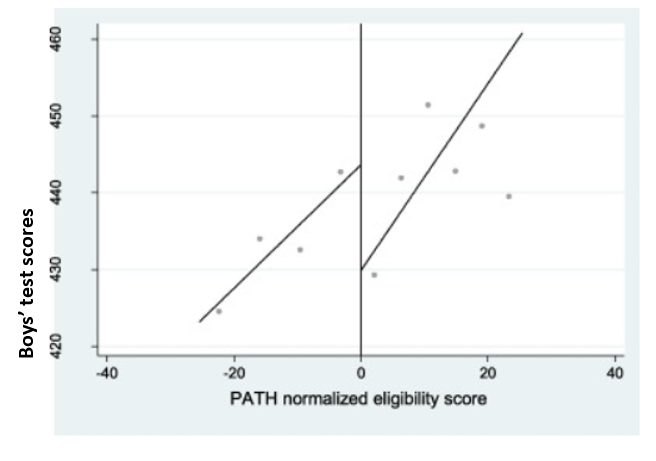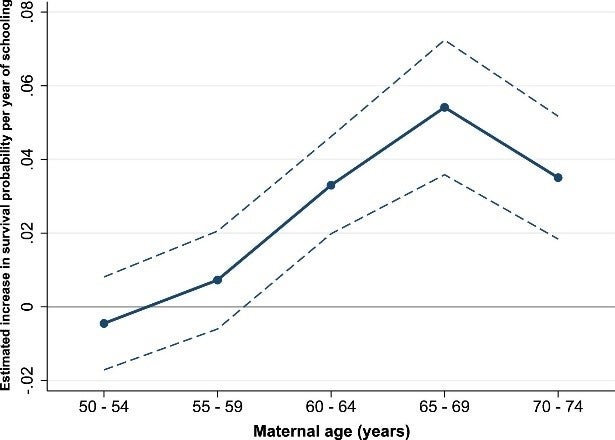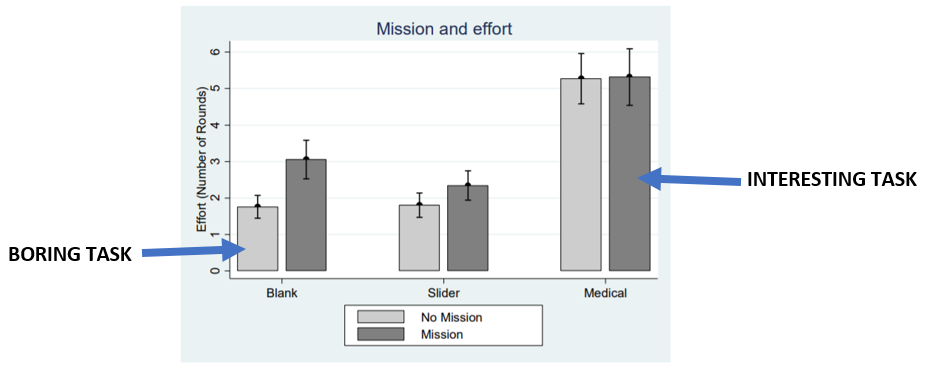Here are 30+ studies on the economics of education and health that I've encountered and found interesting recently. Add your own in the comments!
Education
Teachers and Teaching
Health
Taking medicine


A bit of this, a bit of that
Education
Teachers and Teaching
- How much scripting is too much scripting? Piper et al. review the evidence and find that “structured teachers' guides improve learning outcomes, but that overly scripted teachers' guides are somewhat less effective than simplified teachers' guides that give specific guidance to the teacher but are not written word for word for each lesson in the guide.”
- Teachers in Uganda tend to believe they are better than most other teachers in terms of ability and effort. This is especially true for low-effort teachers (Sabarwal, Kacker, and Habyarimana).
- Across 328 studies with nearly 4,000 effects, Direct Instruction performed really well: “All of the estimated effects were positive and all [with cognitive outcomes] were statistically significant” (Stockard et al.) What’s direct instruction? Think scripted lessons PLUS.
- A small study of 36 teachers in China showed that teachers “scored high on classroom organization, but lower on emotional support and instructional support.” Also, teachers who believe students should be at the center do better. (Coflan et al.)
- A large, unconditional increase in teacher salaries in Indonesia had no impact on student performance (de Ree et al.). This paper has been around (here’s my blog post on it), but it’s just now been published.
- Training teachers in a low-cost, highly scripted teaching method led to big gains in Papua New Guinea (Macdonald and Vu).
- Having subject-specific teachers in primary school may actually lead to less learning and lower student attendance. Evidence from the USA (Fryer) (My blog about it.)
The benefits (and perils) of schooling
- Even students who just barely qualify for secondary school in Kenya see major benefits of attending: better learning outcomes, better employment outcomes, and sharply reduced teen pregnancy (Ozier).
- A reform in Turkey that increased female education led to better labor market outcomes but greater instances of domestic violence (Erten & Keskin). The authors provide evidence that this isn’t just better reporting.
- What do we learn about the earnings increase associated with an additional year of schooling from 139 countries over 65 years? About 9 percent, “very stable over decades.” (Psacharopoulos & Patrinos)
- Conditional cash transfers in Jamaica resulted in better test performance at the end of primary school and better secondary school placement for boys, but not for girls (Stampini et al.).

- Providing school uniforms to children in Kenya led to short-term gains in attendance but no improved outcomes over the long-term (Evans and Ngatia). (Our blog about it.
- In Louisiana (USA), a school choice program “lowers math scores by 0.4 standard deviations and also reduces achievement in reading, science, and social studies. These effects may be due in part to selection of low-quality private schools into the program” (Abdulkadiroğlu, Pathak, & Walters).
- When households lose income, high school and college kids drop out of school in Argentina and Brazil – but not Mexico. Kids who leave because of income shocks do worse in the labor market than similar kids who leave school for other reasons (Cerutti et al.).
- “Teacher training in childcare centers did not improve children's outcomes in Malawi” (Özler et al.). (See blog post.)
Health
Taking medicine
- How can you get patients to finish their malaria medication? In Uganda, “stickers with short, targeted messages on the packaging increase adherence by 9% and reduce untaken pills by 29%... Patients whose symptoms resolve sooner are substantially less likely to adhere, and the sticker interventions have the strongest impact among these patients” (Cohen & Saran).

- Sell it or give it away? In an experiment in India, Banerjee, Barnhardt, and Duflo “find no evidence that either selling DFS [salt fortified with iron and iodine] or providing it for free has an economically meaningful or statistically significant impact on hemoglobin, anemia, physical health, cognition or mental health.”
- What happens when you abolish user fees for maternal and child health services? In South Africa, it resulted in lower fertility and higher educational attainment a decade later (Ito & Tanaka).
- Getting rid of user fees for health facilities in #Zambia led to – you guessed it! – more utilization of health services, especially by the poor. But conditional on seeking care, expenditures rose, so total unconditional expenditure remained roughly unchanged (Hangoma, Robberstad, and Aakvik).
- War reduced the number of male live births in DRC but increased female infant mortality (Dagnelie, De Luca, & Maystadt).
- Unintended consequences: Cash transfers to reduce fertility and the boy-girl sex ratio in India resulted in lower fertility but a higher boy-girl sex ratio (Anukriti).
- Antiretroviral therapy increases life expectancy. As a result, its availability also increases parents’ investments in their children’s schooling, even among adults who are currently HIV-negative. New evidence from Malawi by Baranov and Kohler.

- In South Africa, an initiative to educate adolescents about sexual and reproductive health reduced teen childbearing, resulting in “increased schooling, higher earnings and improved child outcomes” among those who did have children (Branson & Byker).
- Another benefit of educating children? Saving their parents. A 1974 education reform in Tanzania increased children’s schooling and subsequently decreased parent mortality once those children reached the age of 50 (De Neve & Fink).

A bit of this, a bit of that
- How much does a qualified midwife improve the outcomes from a home birth? “Treatment by qualified midwives at birth reduced neonatal mortality… Individuals treated by qualified midwives at birth had substantially lower mortality from cardiovascular diseases and diabetes at ages 40–80…than those treated by traditional birth attendants” (Lazuka).
- How to encourage take-up of health insurance? Try 20 experiments. Social networks turn out to be key. Evidence from Kenya by Chemin.
- Do health workers exert more effort when motivated by pro-social mission or by how interesting the task is? An experiment with medical and nursing students in Burkina Faso suggests that task-based motivation “yields significantly more effort than mission-based motivation.” Mission motivation only matters for boring tasks (Banuri, Keefer, and De Walque).

- Should donors invest in the most cost-effective health interventions? Morton et al argue NO: Fund “interventions which are just cost-ineffective for the country, thus encouraging the country to contribute its own...resources to the fight against disease” (Morton, Arulselvan, & Thomas).
- In Greek mythology, the Hydra was a fearsome, many-headed monster. If you cut off one head, two more would grow. In Mexico, capturing drug kingpins actually increased homicides through its destabilizing effects (Linda & Padilla-Romo).
- Conditional cash transfers in NYC (USA) “improved measures of subjective health, hope, and dental care among poor families, thus contributing to reducing health disparities. However, it had no or limited effects on disparities in a range of other health outcomes” (Courtin et al.).
- It’s not your bathroom: it’s your neighbor’s! Muslims in India tend to be poorer than Hindus, but they have higher child survival rates. Why? Muslim neighbors tend to have better sanitation practices (Geruso & Spears).


Join the Conversation